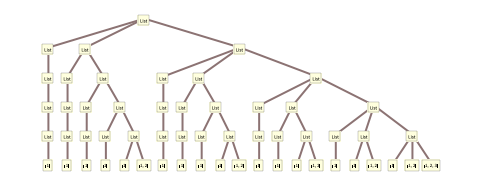Range
✖
Range
Examples
open allclose allBasic Examples (3)Summary of the most common use cases
Scope (6)Survey of the scope of standard use cases
https://wolfram.com/xid/0giumy-hgq6k3
https://wolfram.com/xid/0giumy-jt2xj5
Use an exact numeric-valued step:
https://wolfram.com/xid/0giumy-e1ja
https://wolfram.com/xid/0giumy-jb208
https://wolfram.com/xid/0giumy-fzgkgx
https://wolfram.com/xid/0giumy-b5jce0

Generalizations & Extensions (2)Generalized and extended use cases
Applications (4)Sample problems that can be solved with this function
https://wolfram.com/xid/0giumy-hms323
Form a polynomial from coefficients:
https://wolfram.com/xid/0giumy-13udw
https://wolfram.com/xid/0giumy-e7gevf
https://wolfram.com/xid/0giumy-i8p4cq
https://wolfram.com/xid/0giumy-lr2wfe

https://wolfram.com/xid/0giumy-ebp95r
Properties & Relations (2)Properties of the function, and connections to other functions
Range[imin,imax,di] is equivalent to Table[i,{imin,imax,di}]:
https://wolfram.com/xid/0giumy-h4bg4z
https://wolfram.com/xid/0giumy-jl6j0n
Use Range or Span (;;) as Part specification:
https://wolfram.com/xid/0giumy-ijkmu8
https://wolfram.com/xid/0giumy-czyaw3
https://wolfram.com/xid/0giumy-hq1ox0
Possible Issues (3)Common pitfalls and unexpected behavior
For some step sizes, Range may not include the upper limit given:
https://wolfram.com/xid/0giumy-efvbkl
Even though the lower limit was exact, the inexact step makes the first element inexact:
https://wolfram.com/xid/0giumy-bmlol9
Range accepts Quantity expressions as limits and steps:
https://wolfram.com/xid/0giumy-181vuq
For Quantity expressions, Precision is taken into account when determining whether elements are within the bounds of the limits:
https://wolfram.com/xid/0giumy-0f5l4n
https://wolfram.com/xid/0giumy-rb5j1t

https://wolfram.com/xid/0giumy-d72sge
Neat Examples (1)Surprising or curious use cases
Wolfram Research (1988), Range, Wolfram Language function, https://reference.wolfram.com/language/ref/Range.html.Text
Wolfram Research (1988), Range, Wolfram Language function, https://reference.wolfram.com/language/ref/Range.html.
Wolfram Research (1988), Range, Wolfram Language function, https://reference.wolfram.com/language/ref/Range.html.CMS
Wolfram Language. 1988. "Range." Wolfram Language & System Documentation Center. Wolfram Research. https://reference.wolfram.com/language/ref/Range.html.
Wolfram Language. 1988. "Range." Wolfram Language & System Documentation Center. Wolfram Research. https://reference.wolfram.com/language/ref/Range.html.APA
Wolfram Language. (1988). Range. Wolfram Language & System Documentation Center. Retrieved from https://reference.wolfram.com/language/ref/Range.html
Wolfram Language. (1988). Range. Wolfram Language & System Documentation Center. Retrieved from https://reference.wolfram.com/language/ref/Range.htmlBibTeX
@misc{reference.wolfram_2025_range, author="Wolfram Research", title="{Range}", year="1988", howpublished="\url{https://reference.wolfram.com/language/ref/Range.html}", note=[Accessed: 01-April-2025
]}BibLaTeX
@online{reference.wolfram_2025_range, organization={Wolfram Research}, title={Range}, year={1988}, url={https://reference.wolfram.com/language/ref/Range.html}, note=[Accessed: 01-April-2025
]}
